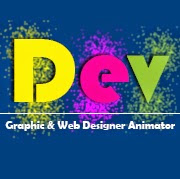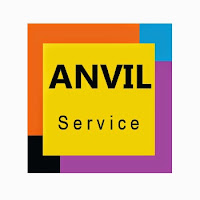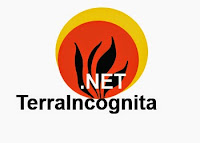Web design is the skill of creating presentations of content (usually hypertext or hypermedia) that is delivered to an end-user through the World Wide Web, by way of a Web browser or other Web-enabled software like Internet television clients, micro-blogging clients and RSS readers.The intent of web design[1] is to create a web site—a collection of electronic documents and applications that reside on a web server/servers and present content and interactive features/interfaces to the end user in form of Web pages once requested. Such elements as text, bit-mapped images (GIFs, JPEGs) and forms can be placed on the page using HTML/X HTML/XML tags. Displaying more complex media (vector graphics, animations, videos, sounds) requires plug-ins such as Adobe Flash, Quick Time, Java run-time environment, etc. Plug-ins are also embedded into web page by using HTML/X HTML tags.Improvements in browsers' compliance with W3C standards prompted a widespread acceptance and usage of X HTML/XML in conjunction with Cascading Style Sheets (C SS) to position and manipulate web page elements and objects. Latest standards and proposals aim at leading to browsers' ability to deliver a wide variety of content and accessibility options to the client possibly without employing plug-ins.
Keep in mind the fundamental difference between expression and impression. One use the prefix ex as in external or exterior the latter uses the prefix in/ i m pointing to internal or interior.
So, when one is creative, it refers in its strict first meaning: to inner activity. In this article, I will try to (re)define what is a creative concept and its role in the process chain necessary to deliver a powerful project.
The word creative stems from the word conceive... which is most of the time in reference with human conception, done inside, one that is private, hidden, and unseen. Interestingly, being creative is not a public activity and demands as such, a proper environment setting in order for you to conceive with brilliance.
You need to set in motion new thought patterns because your task is to generate a new way of messaging the client service/product.
You need to find a powerful concept.
You need to shift yourself into parallel thinking - which means all ideas are possible or perhaps you are more familiar with the out of the box process.
To achieve this, you have to let go of immediate environment and preoccupations. One thing that blocks creativity is stress. The worst ideas come from stress-induced decisions. Remember the core immediate meaning of *being* creative means you need to retreat inside.
- Creative
- showing ability or power to conceive, given to creating, make an impression.
- Concept
- the originating of something in the mind, imagine as possible, a generic idea abstracted from particular instances, foresee result.
The context
The grand scheme meaning attribution in short, the buzzword *creative*, is way far too reaching like a huge canopy falling all over a wide range of activities and too often, misinterpreted as expression or production activities.Keep in mind the fundamental difference between expression and impression. One use the prefix ex as in external or exterior the latter uses the prefix in/ i m pointing to internal or interior.
So, when one is creative, it refers in its strict first meaning: to inner activity. In this article, I will try to (re)define what is a creative concept and its role in the process chain necessary to deliver a powerful project.
The word creative stems from the word conceive... which is most of the time in reference with human conception, done inside, one that is private, hidden, and unseen. Interestingly, being creative is not a public activity and demands as such, a proper environment setting in order for you to conceive with brilliance.
The environment
Let's assume you have landed a new project and you have the client's brief in hand. You need to immerse yourself with this new information and challenge.You need to set in motion new thought patterns because your task is to generate a new way of messaging the client service/product.
You need to find a powerful concept.
You need to shift yourself into parallel thinking - which means all ideas are possible or perhaps you are more familiar with the out of the box process.
To achieve this, you have to let go of immediate environment and preoccupations. One thing that blocks creativity is stress. The worst ideas come from stress-induced decisions. Remember the core immediate meaning of *being* creative means you need to retreat inside.
What is HTML 5:
HTML 5 is to be the new standard of HTML (Hyper Text Markup Language) HTML 5 has been on the drawing boards to quite some time now all tho it seemed like it was to far into the future to start worrying about now, that said we are getting ever closer to HTML 5 being a common practice amongst webmasters.
Some people believe that HTML 5 coding is only being introduced to make browsers manufacturers (browser/ software companies) while other webmasters see this as a great step forward to being able to develop more powerful multimedia. HTML 5 will change the way we work with general HTML as the soon to be standard code is not just a markup from HTML 4 but more that of a new language, HTML will make life easier for everyone including not just browser manufactures but also developers, there are already some example JavaScript applications and APIs using the upcoming HTML5 code.
Most HTML based websites are using HTML 4 as we speak but this will start to change over the coming months and years, up until now the HTML code has hardly evolved from HTML 2.0 only some issues were addressed with the release of HTML 4 along with a small amount of new code references, HTML 5 is based from HTML 4 but in it’s own right it will be completely different and will change the way your browsers render websites on your PC screen, HTML 5 will rely heavily on JavaScript, should you have JavaScript turned off the website / pages are unlikely to render correctly.HTML is essentially how people communicate and acknowledge each other on the World Wide Web as it is the core markup language. The latest version of Hypertext Markup Language, HTML5, has recently been launched with new features and elements to boast about. Here is some information to help you learn HTML 5.
HTML5 is the proposed next standard for HTML 4.01, XHTML 1.0 and DOM Level 2 HTML. Its goal is to reduce the need for proprietary RIA technologies, which include the likes of Adobe Flash, Microsoft Silver light and Sun Java FX.The ideas for the revised HTML began all the way back in 2004 by the WHATWG and are just now making way. Although parts of the revision have been completed and are ready for use, it is an ongoing work that is expected to continue for many years to come.
It certainly features a number of new elements and attributes that will assist modern web sites. Some of the basic elements that have been added include semantic replacements for common uses of generic block and inline elements. Other elements will work with standardized interface like
As you learn HTML 5, you will find there are some elements that have been dropped from HTML 4.01. One such feature is the presentational elements of and
Lastly, you will find the HTML syntax is no longer based on SGML. It now comes with a new introductory line that is similar to SGML document type declaration, allowing standards-compliant rendering in all browsers that use “DOCTYPE sniffing.”
















